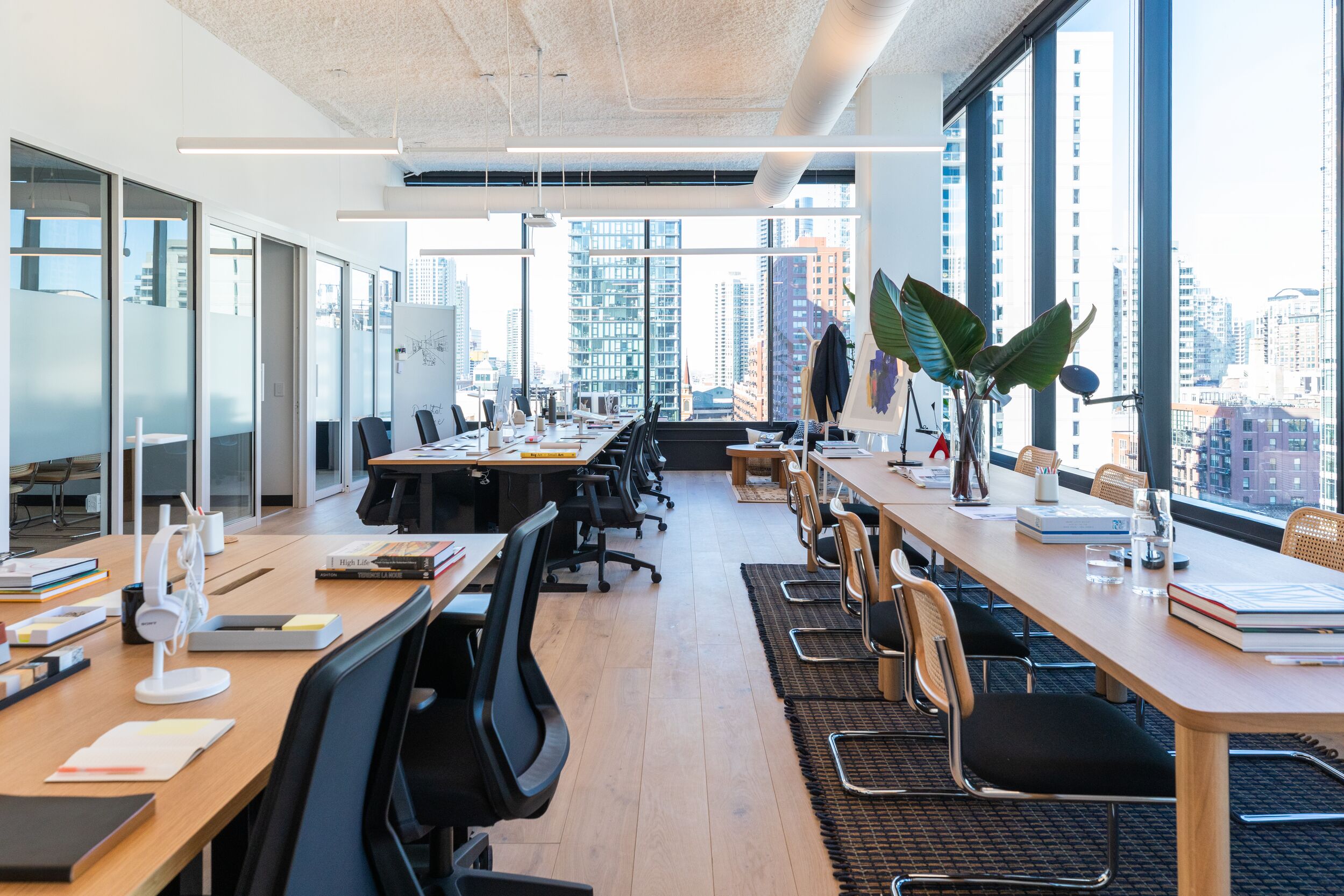If you wanted to slash the carbon footprint of your office, where would you start? The power strips, the AC, or perhaps heating the conference rooms? What about the fuel used when employees take ride-shares to work? Would you factor in the concrete used to construct the building?
Answering these questions was an Earth Day challenge for South Pole, a profit-for-purpose firm that helps companies around the world make their business practices greener. South Pole works with clients like eBay, Nestlé, and Hilton Hotels to identify and reduce carbon pollution in their operations. This Earth Day, the company decided to recruit itself as its newest client and make its office space at WeWork 199 Water St in New York City totally carbon-free.
“It was a bit of a symbolic gesture, but it was a way to invite people to have a conversation about climate,” says South Pole marketing director Nick Aster. WeWork offices are already relatively low-carbon, Aster explains, but accounting for every single bit of carbon the office produces was a cross between a tax audit and a game of Clue.
Aster and his team measured the floor space to calculate how much energy went into heating and cooling. They tabulated the power used by their laptops, phones, projectors, office seltzer machine, and other gadgets. They also took stock of how their employees were getting to work. Were they walking? Riding their bikes? Taking the subway?
Tracking carbon footprints
Some actions put carbon directly into the air, like taking an Uber to the office or operating a gas heater. Others are indirect, like running a fridge with electricity generated by a distant coal or gas power plant. Some are even more indirect, such as the carbon emitted when farming the chicken in the panini you ate for lunch. The carbon footprint of an office can be an almost hopeless tangle of causes and variables. Fortunately, unraveling such tangles is South Pole’s speciality.
“When we work with the client, the first thing we do is help them understand their footprint, and then help them build a roadmap to reducing that footprint,” Aster says.
South Pole helped Nestlé work toward its net-zero carbon goal by tracing the carbon emissions in every layer of its operations, including the farms, factories, and trucks. For eBay Germany, South Pole calculated the carbon impact of products in more than 800 categories, which allowed the company to give its users the option of paying a small fee to offset the carbon of the items they sell. The NBA also enlisted South Pole for a carbon consult: Playing basketball may not result in a lot of emissions, but flying entire basketball teams around the country does.
Even if a company isn’t necessarily interested in the ethics of cutting its carbon, it can be very profitable to go green, Aster explains. The U.S. and other countries are offering new financial incentives for companies to be more sustainable. Plus, a lot of South Pole’s recommendations are simply about being more efficient in general, which almost always saves money.

Still, every client is a brand-new puzzle, and some carbon output is unavoidable. When a company has reduced its emissions as much as it can, South Pole helps it offset the rest by funding carbon-reduction projects elsewhere. These include things like tree plantations, farms that practice sustainable agriculture, and solar or hydroelectric projects in other parts of the world. “At a certain point, you will have unavoidable emissions, so you would purchase credits to cover that which you cannot reduce directly,” Aster says.
South Pole used the same strategy on itself that it does with client companies. On Earth Day, the team paid close attention to its office thermostat, cut its power use to a minimum, and encouraged its employees to walk or cycle to work. Then it offset the remainder of its carbon footprint by funding a wind farm in Tamil Nadu, India. It was a win-win: A region of India gained a little more sustainable power, and a company half a world away was able to slash its emissions.
Reducing space to reduce waste
Aster says WeWork has been an ideal headquarters for a company that is all about efficiency. South Pole can scale its space to meet the size and needs of its team, and as the pandemic forces companies to shift between remote and in-person workplaces, the firm doesn’t have to worry about getting stuck with too much space, or too little.
“When COVID-19 hit, WeWork was very flexible while we regrouped and figured out what we needed to go forward,” Aster says. “They’ve done a good job with AV technology when we want to do Zoom meetings, particularly with larger groups.… You just get a lot more for your buck.”
During the Earth Day event, South Pole invited employees from every company in WeWork 199 Water St to visit its green-ified office and discuss how they can work more sustainably. Aster was pleasantly surprised by the large turnout. For him, it was a sign that companies and employees are increasingly interested in protecting the planet, whether through international supply chain audits or just by biking to work. “There’s clearly an appetite for understanding this stuff better, and that was very heartening,” he says.
The Earth Day event may have been a symbol, but it also highlighted a new wave of cleaner work.
Jared Downing is a writer, journalist, and podcast producer based in New York City.
Rethinking your workspace?










